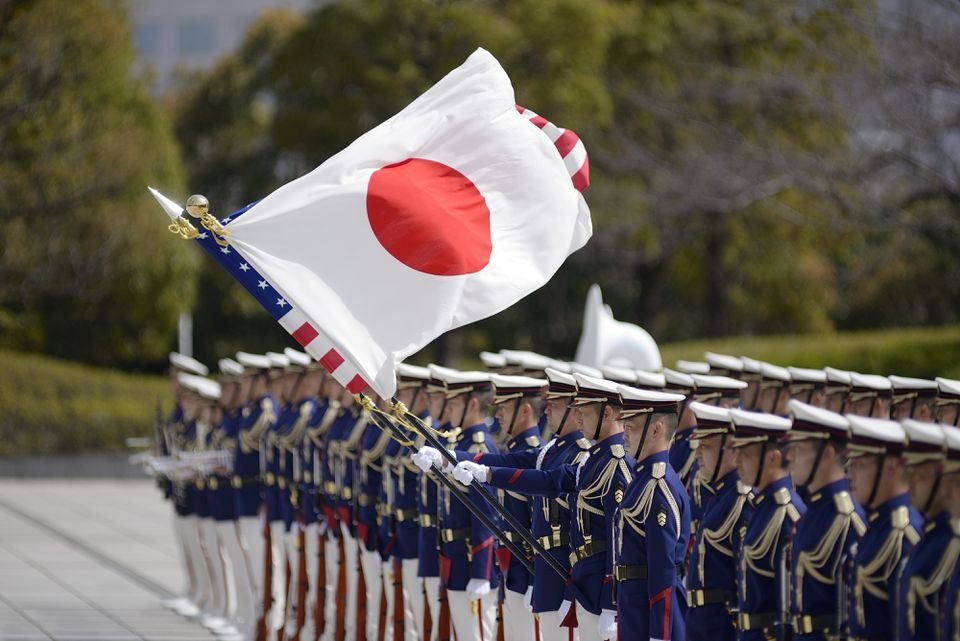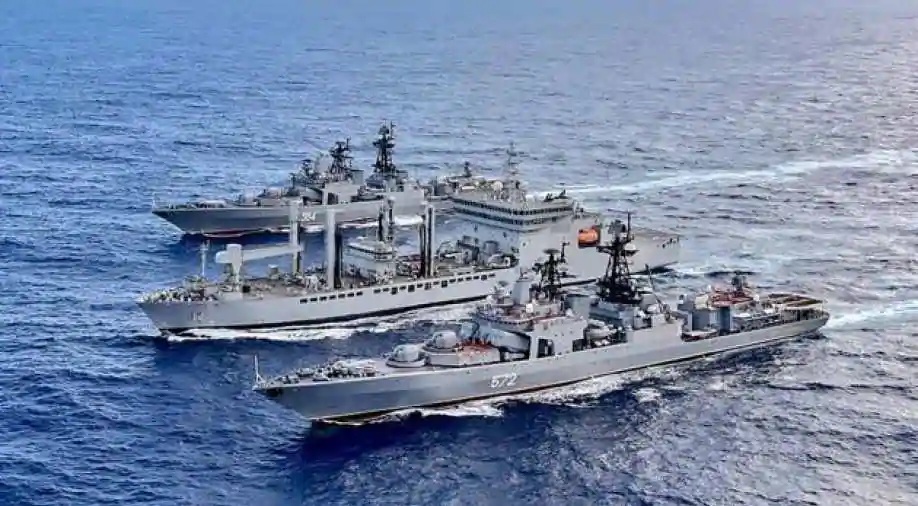|
Getting your Trinity Audio player ready...
|

Japan is facing the worst security environment since the end of World War 2 in 1945. China’s unprecedented military modernization program has placed significant maritime pressure on the Senkaku islands in the East China Sea. The continuation of North Korea, in advancing its nuclear programme and the development of its ballistic missiles, has persisted under Kim Jong-un’s regime without any checks and balances.
On the other hand, Russia’s declaration of Japan as an “unfriendly country” and stepping up its military activities which go against Japanese interests has become yet another concern. A national security policy, a defence strategy and a strategic defence build-up program of Japan, together have shattered a number of norms that had been in place, which had constrained Japan’s geopolitical role as a pacifist state, under the umbrella of the US security guarantees.
The key elements of Japan’s National Security Strategy:
- The initiation of four key strategic objectives:-
- Strengthening the Diplomacy
- Building a comprehensive defence architecture
- Protecting territorial integrity and maritime security.
- Strengthening the cyber security intelligence, counter-terrorism intelligence capabilities and revitalizing the C4I (Command, Control, Communication, Computers and Intelligence) which is popularly known as the holy foursome of National Security.
- China has been seen as a primary security challenge facing the Japanese.
- Doubling of defence spending up to two per cent of the GDP for the first time since world war two, over the next five years. This means that an additional $315 Billion would be spent on defence annually.
- The core defence budget is to increase by over 60%, wherein a significant rise can be seen in civilian R&D with strategic and national security implications.
- The Russia-Ukraine war led to the sudden realization that conventional infantry and artillery-driven wars are possible.
- Development of counter-strike capability, which includes the use of long-range precision strike cruise missiles aimed at targeting the military infrastructure deep inside an adversary’s territory.
- A closer US-Japan defence collaboration can be witnessed because of this policy change, wherein Japan will become US’s key defence ally in East Asia.
- Japan’s Nuclear Principles adopted in 1967, which included Non-Possession, Non-Production and Non-Introduction, have been sublimely nullified with the emergence of these unprecedented policy changes.
- Stabilizing the use of outer space and improving the technological capabilities which would aid in developing satellites dedicated to defence.
- Seeking partners for fostering peace and stability in the international community, in which India is seen as a favourable partner consisting of universal values and strategic interests.
The main reason for this unprecedented paradigm shift in Japanese policy happens to be the realization in Japan’s strategic and national security community that, if there can be an all-out conventional war between Russia and Ukraine on the European front, a conflict of such scale and magnitude can certainly occur in the East Asian front. The recent tension in Taiwan, with the Chinese threat of an invasion, has kept Japan in alert mode. As the Japanese see the safeguarding of Taiwan’s defences as integral to their own defences, they have plunged into developing long-range missile capabilities, to essentially deter China. It is being said by strategic observers across the world that, both in defence spending and firepower, Japan will become the third strongest military force in the world by 2027, and would spend more than India in the defence sector. These changes have gathered broad Japanese public support in the present times. In the past, there have been changes to the Japanese defence policy, and they tended to be controversial and generated a lot of opposition domestically. The reason for the opposition was the policy of non-aggression and pacifism followed by Japan.
‘The Yoshida Doctrine’ propounded by former the Prime Minister of Japan, Mr Shigeru Yoshida in 1948, said that Japan should focus on its economic development to become a major economic power in the world. It should use its economic diplomacy to project its power and influence globally, while its defence would be taken care of, by the American military umbrella. But over the past three decades, since the end of the cold war, there has been a significant change in the political psyche and public opinion in Japan. A realist perspective of interpreting the changes in the world order has become quite prominent, in the public domain, and the pacifist trend based on idealism has seen a systematic decline. Japan has understood the growth of a sphere of influence in the international order. A sphere of influence, although related to hegemony, is not as strong as the imposition of the hegemonic power. A sphere of influence exists when a powerful state moulds the policies of another state without directly controlling its government.
The well-entrenched American military-industrial complex sees this as a golden opportunity to strike attractive defence deals and to involve itself in strategic technological collaborations with the Japanese.
The threat of successful intervention, making or unmaking governments in its sphere, keeps rulers submissive to the powerful state. Close proximity, physical access (such as military bases or the open sea), economic dependence, local officials and military officers on the payroll, and formal alliances help to maintain the sphere of Influence. Major Powers create and maintain spheres of influence for their security, and economic well-being and often for boasting international prestige. In this context, it’s obvious that China is trying to establish its sphere of Influence around Japan, rather than directly imposing its hegemony as it realizes the hard power limitations that Japan possesses. Therefore keeping Japan’s national security at bay happens to be the key motive of China. Prominent strategic scholar and former advisor to Shinzo Abe, Mr Tomohiko Taniguchi, said in a TV interview, “Tensions have already been escalated by China; it’s a daily phenomenon that China is conducting cohesive action around the Japanese territorial waters and Russia is also building its capacities on the eastern front. Its (defence policy changes) is a belated response, and much more needs to be done”. This indicates the fact that the Japanese establishment has clearly charted out its threat perception and is totally conscious of the strategic encirclement by China and Russia.
The principal benefactor of Japan’s defence expansion happens to be the United States. The well-entrenched American military-industrial complex sees this as a golden opportunity to strike attractive defence deals and to involve itself in strategic technological collaborations with the Japanese. Developing Japan’s defence industry with US cooperation and making them more competitive internationally happens to be the key intention of the Americans. The domestic defence industry in Japan is not very organized and competent mainly because of the lack of financial impetus. But now, due to the doubling of the defence budget and with stressed international collaborations, especially with the US, their efficiency and efficacy will significantly increase. The advanced defence capacity naturally invites a much closer US-Japan alliance.
Through the military exercises between Japan and USA for several years, the integration of defence assets between both countries has become seamless. But to evolve an effective strike capability, they would require a greater degree of integration with the US targeting intelligence, surveillance and reconnaissance, and battle damage capabilities. This would require a level of cooperation, which has never been witnessed before. A stronger US alliance would also strengthen the security umbrella of Japan. In any set of circumstances in which Japan is employing cohesive capabilities against the targets in North Korea (for example), the US would certainly take up military action. But in all these circumstances, the Japanese want to exercise autonomy over its defences rather than the Americans taking decisions for them in their critical conflict scenarios, this is perhaps the reason why they are strengthening the land-based long-range missiles, which have a range of 1500 kilometres so that they can target any ship, which is far away from their coast, as a critical maritime security capability.
Impact on India and the Indo-Pacific

Japan through its national security policy is seeking partners for fostering peace and stability in the international community. India is seen as a favourable partner consisting of universal values and strategic interests, through which Japan can leverage its strategic impact in the Indo-pacific region. Japan sees India as the gateway for maritime security in the Indo-pacific region. The concern of freedom of navigation in the Indo-pacific is also common for Japan, as it realizes the gross violations of the International sea laws of the UNCLOS (United Nations Convention on the Law of the Sea) in the East and South China Sea. From agendas of mutual interests between allies to partnership development with favourable terms of trade, there are challenging security and economic scenarios which are arising because of the growth of the Chinese dominance in the Indo-pacific region. Japan is completely aware of this fact. Therefore, in this national security policy, a vital step has been taken in order to challenge the Chinese sphere of influence.
With China being the global manufacturing hub so far, India can certainly be the principal defence manufacturing hub for Japan.
It’s well known that Japan gives out overseas development assistance (low-interest long-term loans) to several countries including India. It is now planning to utilize this assistance, for the fulfilment of its strategic purposes. This gives us an indication that Japan might develop strategic defence partnerships with India, through its investments, in future. India can expect strategic linkages for the Japanese projects which would be executed in future. There would be a greater security linkage rather than an economic linkage for the Japanese projects. This brings about a golden opportunity for the Indian establishment to forge alliances with Japan, to gain from its technological and defence advancement milestones. India’s large manpower and land, with the Japanese technological might, would bring about a favourable condition for creating venues for large-scale defence manufacturing.
With China being the global manufacturing hub so far, India can certainly be the principal defence manufacturing hub for Japan. Through this, Japan can significantly cut its production costs, as Indian labour is far cheaper than that of the US. This would not just boost the Indian economy, but also would help Japan in attaining its goal of becoming a strong deterrent force against the Chinese in a robust manner, with a steady supply chain at the place. Japan’s paradigm shift in its security policy happens to be a response to the sphere of Influence and hegemony being developed by China.
As the Russia-Ukraine war has headed for a stalemate, the fear of a conventional war is constantly lingering in the strategic establishment of Japan. The quest for a larger geopolitical role, prioritizing its national interests and national security goals has driven Japan towards certain inevitable strategic compulsions, with a realist perspective. An increased role of the US strategic establishment in Japanese affairs is going to be a new reality. India must materialize this opportunity not just to strengthen its national interests, but also to develop a key strategic partnership with Japan.
(The author has an MA in International Relations. Opinions expressed are the author’s own)
Viswapramod is a PhD Scholar at the Department of International Studies and Political Science, Christ University, Bangalore. He has an MA in International Relations. Views expressed are the author’s own.

Excellent article. Very comprehensive and deep in its understanding and grasp. A must read.
A very good article indeed. I specially liked the context of the effect of Japanese security with that of India. I would implore everyone to read it.